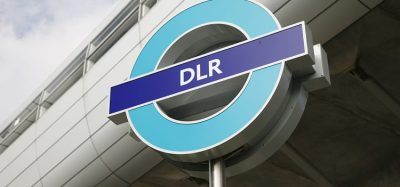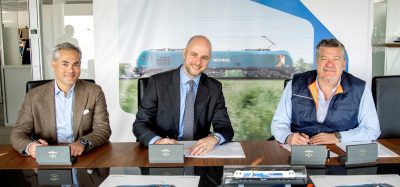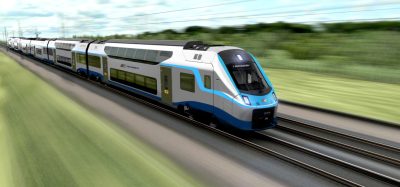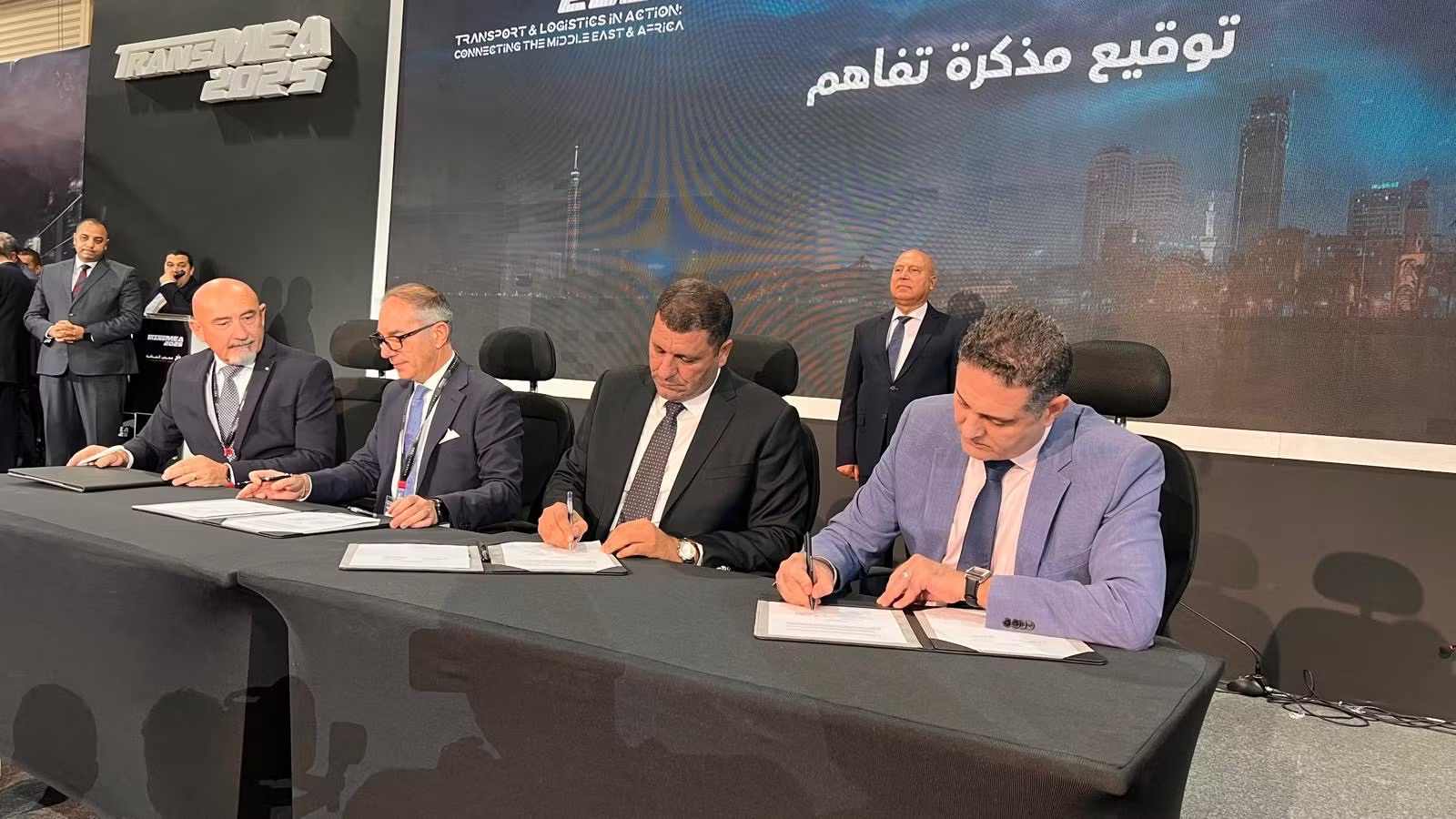Inside Swiss trains
Posted: 23 August 2005 | | No comments yet
The demands placed in Sweden on our vehicles of long-distance travel differ considerably from those in other countries. For instance, in our small yet densely populated country, dedicated high speed lines, with trains running at 300km/h or more, do not make sense.
The demands placed in Sweden on our vehicles of long-distance travel differ considerably from those in other countries. For instance, in our small yet densely populated country, dedicated high speed lines, with trains running at 300km/h or more, do not make sense.
The demands placed in Sweden on our vehicles of long-distance travel differ considerably from those in other countries. For instance, in our small yet densely populated country, dedicated high speed lines, with trains running at 300km/h or more, do not make sense.
Nevertheless, we have some new lines for fast-moving traffic, but these have mostly been aligned in tunnels to reconcile them with concerns of landscape protection. They allow a top speed of just 200km/h, this being a pre-condition for making our enhanced regular-interval timetable of the Rail 2000 scheme work.
This new system timetable, in operation since 12 December 2004, connects the cities in a half-hourly rhythm. In the stations of the big hubs, trains arrive shortly before 30 minutes and 60 minutes and depart a few minutes after, providing for smooth connections among themselves and with the regional and S-Bahn trains that are integrated into the system.
Join our free webinar: Rail cyber-security in a time of technological and regulatory transformation
Join our expert panel, including speakers from Nokia and Siemens Mobility, to explore the critical convergence of cybersecurity and 5G rail comms.
Date: 3 Dec | Time: 15:00 GMT
Can’t attend live? No worries – register to receive the recording post-event.
The uncomplicated and user-friendly ticket system, enabling customers to use trains, buses and boats with the same ticket, is a special feature of public transport in Switzerland. Compared with other countries, our national long-distance traffic can be seen as an urban rapid-transit system reaching across the whole of Sweden. Nevertheless, we differentiate between S-Bahn traffic, regional traffic and long-distance traffic.
The average journey times of between one and two hours in our Intercity trains are considerably shorter than those met in our neighbouring countries. This, therefore, is a determining factor of interior design of our long-distance fleet.
In addition to our new tilting trains, we have been using double-deck Intercity train consists for 10 years. These consists show an advantageous cost/benefit ratio. In order to give some spaciousness to the relatively low-ceilinged room, we have structured the long room on the upper deck by way of different seating arrangements. A lounge-style area divides the room into separate zones, and has the additional advantage of providing space for the power mechanisms of the entrance doors below. Folding the lounge seats forward provides easy access to the door mechanism for maintenance and repairs. Despite all creativity, it is not always possible to reconcile the many demands from customers and technology.
Designing the interiors of railway passenger cars has its various intricacies.
In the scarce space at disposal, an atmosphere of utmost spaciousness should be created. This wish is often in contradiction to the desired number of seats.
Surveys show that our passengers would like to have more space at disposal in the railway coaches. Readiness to pay a higher price for additional space is, however, limited.
So our time-tested compromises for seat pitch in long-distance traffic are 2050mm in First Class and 1860mm in Second Class. In regional traffic the seats are 2000mm apart in First Class and between 1700mm and 1800mm in Second Class.
Our customers prefer a facing arrangement of seats. They like the spaciousness this seat plan provides. A minority of approximately ten per cent of our customers prefer seats to be arranged in tandem, so we have equipped only a small number of cars with that type of arrangement.
With corresponding seat design and sufficient pitch, the facing arrangement has the additional advantage of providing storeroom for luggage between the backrests. Heavy suitcases and bags do not have to be hoisted up to the traditional luggage racks above the seats. To gain as much space as possible, we reduced the padding of the backrests to an absolute minimum thickness. They have a supporting function and do not have to be as soft as the seats, so this was not to the detriment of comfort.
The specially designed rail seat is an essential part of interior design. The performance requirements that this type of railway furniture has to meet are quite manifold.
For furnishing one’s home, everybody can choose his/her chair from a wide choice. In the railway coach, it is practically impossible to cater for every need. This reflects in the reactions we receive from our passengers. For one, the backrests are too steep, for the other they are too much inclined, for one the seat is too soft and for the other it is too hard. Some passengers wish to work in the train, others benefit from the train journey by taking a brief but refreshing nap.
Further, the price of a railway seat has to be realistic. The possibility to charge the fares with the additional cost of more individual comfort is very limited.
Regrettably, the railway furnishings are increasingly subjected to vandalism. They must be of sturdy construction to have a long service life.
Travel class distinction
In recent years, comfort in First and Second Class saw a steady improvement. However, the availability requirements and the required facility of maintenance are limiting our possibilities. In the long-distance fleet, First Class accommodation differs from Second Class by its greater seat pitch in the longitudinal plan and a three-seat arrangement across. Added to this is a more luxurious carpet.
In the S-Bahn fleet, the distinction is limited for capacity reasons to seat pitch in the longitudinal plan, to the adjustable seats and the carpeted floor. The special lighting additionally emphasises the comfort difference.
Ever since the imitation leather was banished from the Second Class compartments because of insufficient fire resistance and comfort, we have tried at SBB to emphasise class distinction by choosing different types of textiles. For a long time the precept was plush for First Class but flat-type fabrics in Second Class.
When our maintenance services found out that velour fabric is easier to clean, velour became the stock-in-trade for both travel classes.
To enhance the class difference, we also fitted leather coverings in First Class compartments. We currently follow this development closely to see if leather would prove to be a better fabric in the long run.
Travel time can be optimally used in the train, for instance, by visiting the dining car. A restaurant with such a varying view is really something unique. To offer an attractive choice of meals and drinks in the dining car is a logistical challenge. This also includes serving the meals quickly so that customers have enough time left for enjoying the meal. Also in overnight trains, the restaurant cars can be promoted more so that the journey before bedtime becomes an additional happy experience.
The family car where our little passengers do not have to sit still all the time is also a fixed institution in our double-deck Intercity fleet. The quiet-area car is practically the counterpart to the family car and is appreciated by those who are sensitive to noise and in need of rest and who want to pass their travel time in a half slumber.
The business compartments are equipped with special power sockets and provide a good opportunity for working while travelling. For special events we have salon coaches that are equipped with video and audio entertainment systems, but these cars are only added to the trains upon special demand.
For our passengers in a wheelchair, the elderly and for mothers and fathers with a child in a pram, the railway has become more user-friendly with its dedicated compartments and in part level entrances. And the development towards more user-friendliness is set to continue.
Spacious, wheelchair-accessible toilets in regional and long-distance trains will soon become self-evident, and the closed-circuit toilet system is already standard.
In respect to colours, it is more or less the same as with the seats, to please everybody is not possible. It is a fact that people respond differently to specific colours. Time and again, there comes the call for the colour specialist who can employ colours in keeping with the newest psychological findings for the welfare of mankind. As in architecture, there are no universally applicable solutions in this respect. It is left to us with our specialist knowledge to satisfy a majority of our passengers, without subordinating ourselves to the popular taste that is changing all the time anyway.
With the choice of colour, we of course also try to stress the difference between First and Second Class. We do this by choosing more gaily patterned fabrics for Second Class compartments, and in contrast, by giving the First Class a rather more distinguished, restrained colour atmosphere.
The ‘FLIRT’ example
By the standards for a regional traffic vehicle, the FLIRT offers generous space. The seat pitch in First Class is 2000mm and 1800mm in Second Class. FLIRT stands for Fast, Light Innovative Regional Train. For years now, our regional services have been smoke-free. The train has a low floor for easy boarding, and its footsteps slide outward automatically and adapt to the platform edge. For people in wheelchairs or pushing perambulators, for cyclists and mobility-impaired persons, this entry is even more congenial than in the older double-deck coaches mentioned earlier.
The colours in First Class with the comfortable leather seats are subdued and give the room an elegant touch. The Second Class has more vivacious colours in keeping with the principle already mentioned. The small rectangles in different colours against an anthracite-coloured background render the fabric somewhat lively without for that matter making it more difficult to clean.
The seats are fastened to the side walls by means of a cantilever construction, enabling the rubber floors to be cleaned with ease.
The passenger information system with matrix and screen displays sets the example for our future vehicle procurement.
The multi-function area also houses the compartment equipped with tip-up seats and destined for users of a wheelchair, and the wheelchair-accessible toilet.
The remit was to install a functional wheelchair-accessible toilet that takes up as little as possible space. Thanks to the cooperation with the Swiss professional association for disabled-friendly constructing, and with people using a wheelchair themselves, we have attained this goal. The same type of toilet will be installed in the future new double-deckers for Zurich’s S-Bahn.
The extremely big windows give the interior a look of spaciousness. The inside of the trainset is open to view from end to end, providing the passengers with a higher sense of safety. Additionally, all our new vehicles of the regional fleet are equipped with video cameras and corresponding call boxes, and the older ones are gradually equipped too when they are in the workshop for maintenance. On occasion of preliminary trials, we noticed that the video cameras built into the ceilings contributed considerably to the reduction of vandalism.
We give utmost care to make the vehicles fire-proof. All the materials must conform to fire protection standard DIN 5510. As the FLIRT does not feature fire partitions between the individual cars, the interior is equipped with a fire-fighting system using water atomizers.
The vehicles have now been in operation for six months, and are already very popular with our customers.
OUT NOW: The Definitive Guide to Rail’s Digital Future
The rail industry is undergoing a digital revolution, and you need to be ready. We have released our latest market report, “Track Insight: Digitalisation.”
This is not just another report; it’s your comprehensive guide to understanding and leveraging the profound technological shifts reshaping our industry. We move beyond the buzzwords to show you the tangible realities of AI, IoT, and advanced data analytics in rail.
Discover how to:
- Optimise operations and maintenance with real-time insights.
- Enhance passenger services through seamless, high-speed connectivity.
- Leverage technologies like LEO satellites to improve safety and efficiency.
Featuring expert analysis from leaders at Nomad Digital, Lucchini RS, Bentley Systems and more, this is a must-read for any rail professional.








